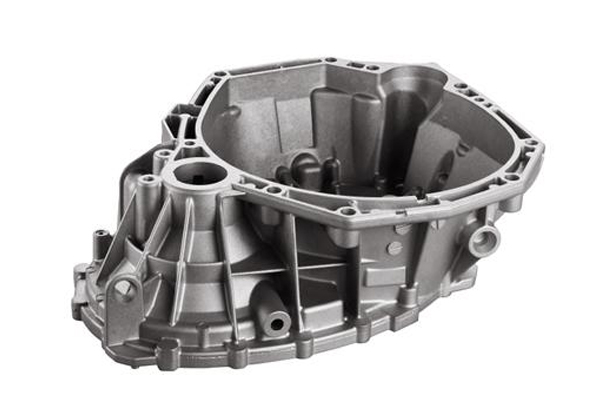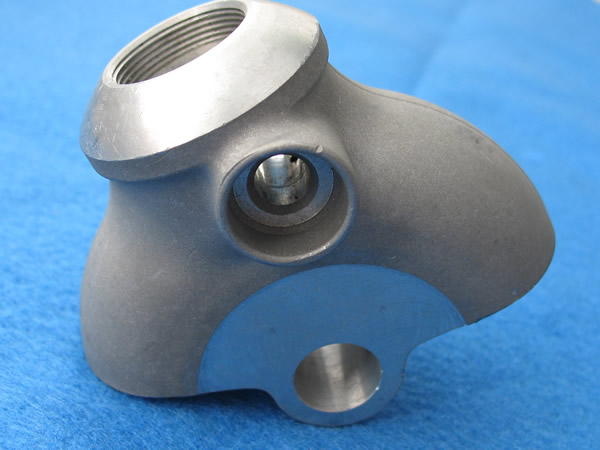The development of Aluminum Casting and its role today
Comprehending the Advantages and Varieties of Aluminum Castings in Sector
Aluminum castings have actually become increasingly vital throughout different markets as a result of their distinct buildings and making convenience. Their lightweight and corrosion-resistant nature makes them suitable for requiring applications. Various spreading methods permit exact and intricate layouts. As industries evolve, understanding the series of aluminum casting options and their advantages is vital. This expedition raises inquiries regarding their future duty in manufacturing and sustainability. What exists in advance for aluminum in these industries?
The Basics of Aluminum Casting Processes
Aluminum casting processes differ in strategy, they all share a typical objective: to transform molten light weight aluminum into specific forms and components. The key approaches of aluminum spreading include sand casting, die casting, and investment spreading. In sand casting, mold and mildews are created utilizing sand, enabling elaborate styles yet usually resulting in a rough surface area coating. Die casting employs high-pressure injection of molten light weight aluminum right into metal molds, generating high accuracy and smooth surface areas, appropriate for mass production. Financial investment spreading, or lost-wax casting, involves developing a wax pattern covered with a ceramic covering, giving exceptional detail and dimensional accuracy. Each approach has its details applications and considerations, including cost, manufacturing volume, and complexity of the forms produced. Comprehending these fundamental techniques is crucial for sectors that rely upon light weight aluminum castings to satisfy their design and functional demands.
Trick Benefits of Utilizing Aluminum Castings
Aluminum castings supply various benefits that make them a recommended option in numerous industries. Among the essential benefits is their light-weight nature, which permits easier handling and decreased shipping prices. This particular adds to boosted power effectiveness, especially in automobile and aerospace applications. In addition, aluminum displays exceptional corrosion resistance, extending the lifespan of parts and minimizing upkeep needs.
One more advantage is the convenience of light weight aluminum castings, which can be molded into complicated forms, making it possible for innovative designs that typical materials might not fit. The thermal and electrical conductivity of aluminum also makes it suitable for applications needing warm dissipation or efficient electrical links. Aluminum castings are recyclable, straightening with sustainability objectives and decreasing environmental impact. In general, the mix of strength, longevity, and versatility makes aluminum castings a vital component in contemporary production methods across several markets.
Usual Sorts Of Aluminum Castings
Aluminum castings are generated through various approaches, each matched for various applications and demands. Among one of the most common strategies are sand spreading, which supplies adaptability and cost-effectiveness, and die casting, recognized for its accuracy and efficiency. Understanding these processes is crucial for choosing the ideal spreading approach for certain industrial demands.
Sand Casting Process
A considerable section of light weight aluminum castings in industry is generated with the sand casting procedure, which is renowned for its adaptability and cost-effectiveness. This method entails producing a mold and mildew from a sand blend, enabling the production of complex shapes and large components. Sand casting is especially useful for little to medium-sized production runs, as it needs marginal initial investment in tooling. The process starts with pattern making, complied with by mold and mildew prep work, putting liquified light weight aluminum, and finally, cooling down and completing. The high thermal conductivity of aluminum assurances even cooling, minimizing the threat of flaws. As a result, sand casting stays a recommended choice for suppliers seeking performance and adaptability in their light weight aluminum casting applications.
Die Casting Techniques
Die casting strategies stand for an extremely reliable approach for creating light weight aluminum castings, especially suited for high-volume manufacturing. These techniques largely include two typical kinds: hot chamber and chilly chamber die casting. In hot chamber pass away casting, the liquified light weight aluminum is infused into the mold and mildew from a storage tank that is warmed, making it excellent for low-melting-point alloys. Alternatively, chilly chamber pass away casting includes putting the liquified light weight aluminum right into a separate chamber prior to injection, which fits higher melting-point products. Both techniques provide accuracy fit complex geometries and attaining superb surface area coatings. In addition, die spreading is understood for its rapid cycle times, lowering manufacturing expenses while preserving uniformity in high quality across large quantities of components.
Applications in the Automotive Sector
Transforming lorry style and performance, light weight aluminum castings play a necessary function in the vehicle market. These castings contribute considerably to weight decrease, boosting fuel efficiency and overall car dynamics. Secret applications include engine blocks, transmission real estates, and suspension elements, where their light-weight nature and strength are crucial.
Aluminum castings also enable for complicated geometries, making it possible for suppliers to develop intricate styles that optimize air flow and reduce drag. This ability is specifically valuable in electric and hybrid lorries, where efficiency and efficiency are critical.
Additionally, the rust resistance of light weight aluminum extends the life-span of automobile components, reducing maintenance prices and enhancing vehicle dependability. The flexibility of light weight aluminum castings supports both mass production and custom applications, making them a recommended choice amongst vehicle engineers and developers. Aluminum Casting. As the market proceeds to innovate, aluminum castings will certainly stay a crucial element in the pursuit of advanced automotive technologies
Aerospace Sector Use
In the aerospace sector, aluminum castings are important to the layout and functionality of airplane components. These castings are made use of in various applications, consisting of engine parts, architectural parts, and interior installations. Their lightweight nature adds to improved fuel efficiency and total efficiency, which is important in aerospace engineering.
Aluminum castings also link use exceptional strength-to-weight proportions, enabling makers to produce elaborate layouts without endangering structural stability. The capability to produce complicated geometries makes aluminum casting a recommended selection for parts that call for precision and dependability.
Additionally, aluminum's resistance to rust boosts the long life of aerospace components, minimizing upkeep expenses and enhancing safety (Aluminum Casting). The casting procedure permits high-volume production, meeting the sector's needs for performance. On the whole, have a peek at this website light weight aluminum castings play a crucial duty beforehand aerospace innovation and optimizing airplane style, contributing to the sector's continuous developments

Advantages Over Various Other Materials
Aluminum castings supply considerable advantages over various other materials, making them a recommended choice in numerous markets. Among the main benefits is their lightweight nature, which adds to reduced power usage and enhanced efficiency in applications such as auto and aerospace. Additionally, light weight aluminum exhibits excellent rust resistance, enabling extended durability and reduced maintenance prices.
The product's exceptional thermal and electric conductivity further enhances its allure, particularly in applications needing warmth dissipation or effective power transfer. Aluminum Casting. Aluminum castings also supply superb dimensional stability, making certain specific resistances and minimizing the likelihood of flaws throughout the manufacturing procedure
The adaptability of aluminum enables for complex shapes and elaborate styles, which can be achieved with different casting approaches. This versatility makes aluminum a beneficial option for makers intending to introduce while keeping cost-effectiveness and quality. In conclusion, aluminum castings stand apart because of their special mix of properties that satisfy diverse industrial requirements.
Future Patterns in Aluminum Casting Technology
Future patterns in aluminum spreading go to the website modern technology are increasingly concentrated on automation and the growth of advanced alloys. Automation stands to boost efficiency and precision in casting processes, reducing labor prices and enhancing product consistency. Concurrently, advancements in alloy formulations promise to expand the series of applications for light weight aluminum castings, resolving certain performance requirements in different industries.
Automation in Casting Procedures

Advanced Alloys Advancement
With the continuous development of material scientific research, the advancement of advanced alloys is readied to change light weight aluminum spreading innovation significantly. These cutting-edge alloys are developed to boost mechanical homes, corrosion resistance, and thermal stability, dealing with varied commercial applications. Researchers are concentrating on hybrid alloys that integrate components such as magnesium, silicon, and zinc to attain peak performance. In addition, developments in computational modeling and simulation are enabling the forecast of alloy actions under different problems, streamlining the style procedure. The integration of reusing technologies is likewise becoming vital, enabling suppliers to produce high-performance light weight aluminum castings while lessening environmental influence. As these patterns continue, the light weight aluminum casting sector is likely to witness substantial improvements in efficiency, sustainability, and product high quality.
Regularly Asked Concerns
How Is Aluminum Casting Ecologically Friendly?
The concern of aluminum casting's ecological friendliness arises from its recyclability and lower power usage compared to other steels. In addition, advancements in sustainable methods additionally improve its eco-friendly track record within manufacturing processes.
What Is the Regular Lifespan of Aluminum Castings?
The normal lifespan of light weight aluminum castings varies based upon application and atmosphere, typically varying from numerous years to decades. Factors such as direct exposure to destructive elements and mechanical stress can greatly influence their resilience and durability.
Can Aluminum Castings Be Recycled?
Aluminum castings can certainly be recycled. This procedure substantially reduces waste and saves sources, permitting producers to reuse materials effectively. Reusing aluminum castings contributes to sustainability and reduces the ecological effect related to aluminum manufacturing.
What Are the Common Flaws in Aluminum Castings?
Common issues in light weight aluminum castings consist of porosity, contraction, misalignment, and surface imperfections. These problems can emerge from inadequate putting techniques, incorrect alloy make-up, or insufficient air conditioning, inevitably impacting the top quality and performance of the last item.
How Do I Choose the Right Aluminum Casting Process?
Choosing the right light weight aluminum casting procedure needs assessing manufacturing quantity, component complexity, and wanted residential properties. Variables such as price, preparation, and material attributes additionally affect the decision, guaranteeing optimal outcomes for details applications.